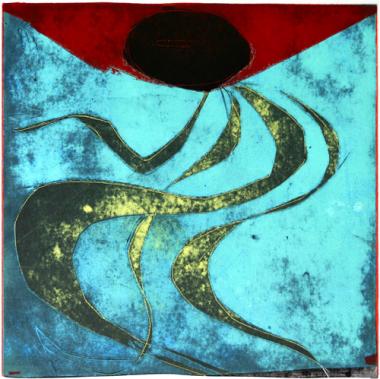Monotype

Monotype prints are in ONE copy only. A clean and unetched plate is used and images are created with nothing that can be reproduced.
There are three principle methods of making a monotype:
- The additive or light-field method, in which the image is painted by adding or building up pigment onto the plate
- The subtractive or dark-field method where the entire plate is covered with a thin layer of pigment, which the artist then works out his image by removing some of the pigment with brushes, rags, sticks, or other tools.
- The third is a combination of the two.
The appeal of the monotype lies in the unique translucency that creates a quality of light very different from a painting on paper or a print, and the beauty of this media is also in its spontaneity and its combination of printmaking, painting and drawing mediums. Also known as the most painterly method among the printmaking techniques, monoprints and monotypes are essentially printed paintings.
Since the seventeenth century artists have occasionally used a process in which the image is painted onto an otherwise unprepared 'printing' surface, for which substances as different as copper and milboard have been used. An oily pigment was normal, traditionally printer's ink, and this was transferred to paper either by rubbing or being passed through the intaglio press. The pressure gave a special look to the spread of the colours, and the design remained visible on the original plate and so could be repainted for another impression if required. Nevertheless, each printed image remained unique, hence 'monotype'.
Blake used this technique to superb effect, producing up to three impressions of some subjects, and Degas was another major artist to turn his hand to this medium.